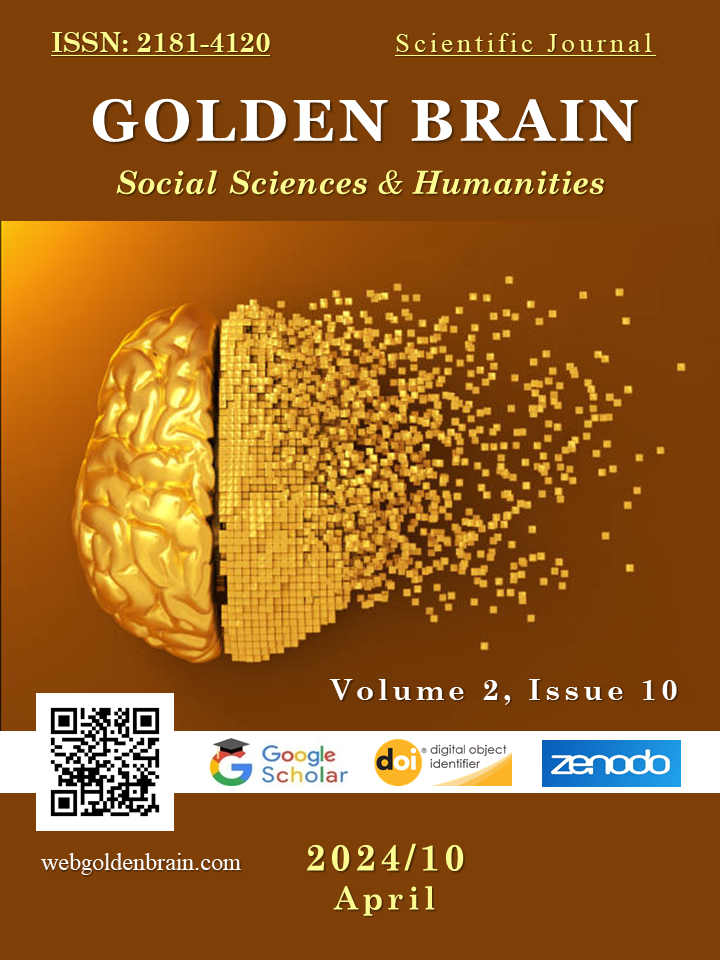THE TRANSLATION METHODS OF RIDDLE TEXTS IN TRANSLATION STUDIES
Main Article Content
Abstract
This article discusses the diverse translation methods employed in rendering riddle texts across languages within the realm of translation studies, exploring the strategies, approaches, and considerations that shape the multilayered process of translating riddles for global audiences.
Article Details

This work is licensed under a Creative Commons Attribution 4.0 International License.
How to Cite
References
Abrahams, R., & Dundes, A. “Riddles”. In R. Dorson, Folklore and Folklife: An Introduction. The University of Chicago Press. 2001.
Mulyanah, A. The Strategy of Terminology Translation.Advances in Social Science, Education and Humanities Research, 2019.
Sadiq, S. Translation: Some Lexical and Syntactic Problems & Suggested Solution. 2008.
Gutt, Ernst-August. Translation and Relevance. Cognition and Context. Manchester: St. Jerome. 2000.
Miaja, M. Riddle. Meaning and survival. Spain: Miguel de Servantes Virtual Library. 2008.
Saparniyazova M. Syntactic-semantic features of Uzbek folk riddles: Abstract of the dissertation of the candidate of philological sciences. Tashkent, 2005.
Qobulova U.S. The relationship of integral and differential semantics in the metaphorical text Abstract of the dissertation. Tashkent, 2017. .
Khayrieva M.I. GUIDELINES FOR COMPLETING TASKS IN INDEPENDENT WORK FOR STUDENTS OF LINGUISTIC UNIVERSITIES // Galaxy International Interdisciplinary Research Journal 12 (1), 336-339
Khayrieva M.I. THE PROBLEM OF INTERFERENCE IN LEARNING AND TEACHING LANGUAGES // Web of Teachers: Inderscience Research 1 (8), 126-130
Khayrieva M.I. & KL Eshkuvatovna The specific features of translation of the poetry and prose from English into Uzbek // American Journal of Social and Humanitarian Research 2 (9), 11-14)
Khayrieva M.I. & KL Eshkuvatovna. Linguistic problems of literary translation // Galaxy International Interdisciplinary Research Journal 10 (1), 864-867
